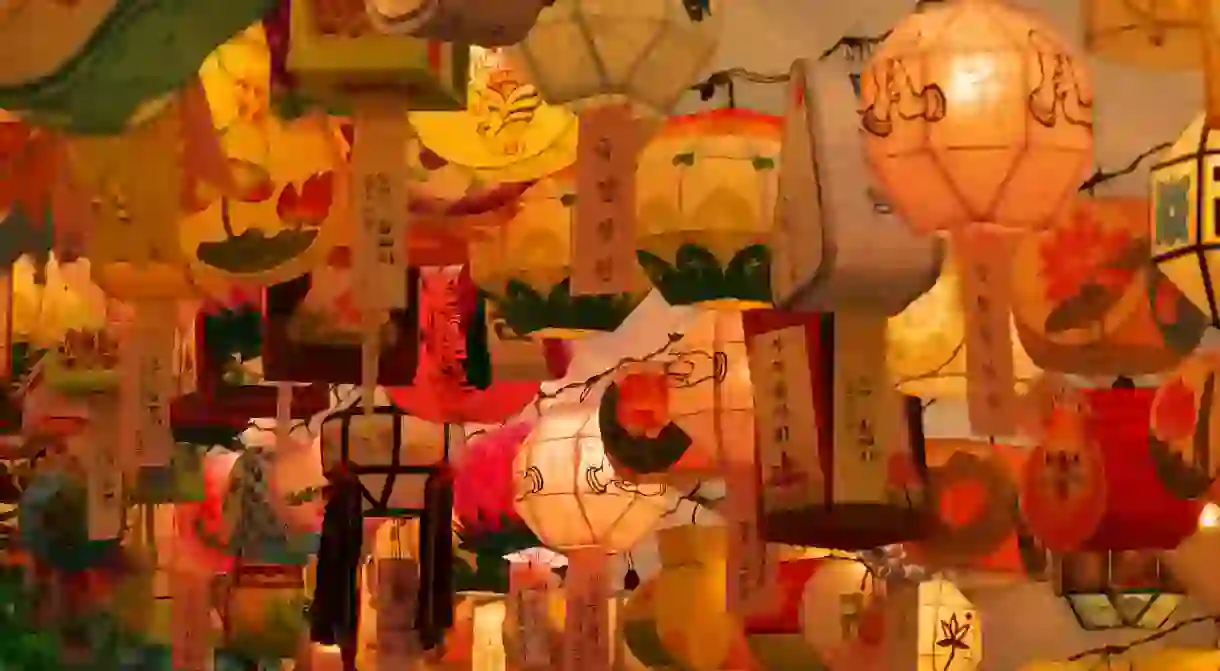How to Celebrate Buddha's Birthday in South Korea

Every spring in South Korea, millions of Buddhists and non-Buddhists alike come together to celebrate the birth of Siddhartha Gautama, the founder of Buddhism. The entire country is illuminated by the soft glow of multicolored lanterns while temples host various performances and awe-inspiring parades. Learn more how you can participate in this age-old cultural tradition.
“Seokga Tansinil”, meaning “Buddha’s Birthday” in Korean, has been widely observed throughout Asia for centuries. Because of variations in historical records, different nations celebrate the holiday on different days. In South Korea, it happens to fall on the eighth day of the fourth month of the lunar calendar.

The holiday is not only an auspicious day for South Korea’s practicing Buddhists – a group that makes up about a fifth of the country’s population – but Buddha’s Birthday is also a public holiday that is celebrated across the nation. Many of the events surrounding the holiday begin about a week before the day itself, while the colorful lotus-shaped lanterns synonymous with the day are hung as early as a month ahead of time.

Visit a temple
Perhaps one of the most obvious ways to take part in Buddha’s Birthday is by visiting one of South Korea’s hundreds of beautiful Buddhist temples. During the holiday, the temples are transformed into kaleidoscopes of color, bedecked with vibrant lotus-shaped lanterns that symbolically convey the wisdom and compassion of the sage.
In Seoul, head to Bongeunsa in the heart of Gangnam, or Jogyesa, the headquarters of the Jogye Order of Korean Buddhism, in Insadong for the most elaborate events. Busan also has its fair share of impressive temples, including Haedong Yonggungsa, which is situated on the coast and offers gorgeous ocean views, and Samgwangsa, which boasts what is undoubtedly the most impressive lantern display on the peninsula.
While all temples celebrate Buddha’s Birthday in some regard, festivities are more elaborate at some than others. Some host traditional Korean games and performances, such as mask dances and acrobatic shows with tightrope walkers. Others invite participants to hang their own paper lantern in the temple complex (for a nominal fee). On these lanterns, visitors write their name and a wish that they hope will be realized.

Sample buddhist temple food
Those that make the trek to Korea’s temples on the day of Buddha’s birth are often treated to a complimentary vegetarian meal such as sanchae bibimbap (wild vegetable rice bowl), or a traditional Korean tea ceremony. Some temples even allow guests to experience balwoo gongyang, monastic formal meals where vegetarian dishes are consumed in total silence and not a single grain of rice is wasted.
Those looking to further explore Buddhist temple cuisine should make a reservation at Barugongyang. Each of the restaurant’s pre-fixed seasonal course meals offers up an eclectic mix of dishes that are cooked according to Buddhist law. Strictly vegetarian, the dishes lack ‘chi-disrupting’ ingredients such as onion, garlic and chili powder and instead use agents such as kelp, mushroom, wild sesame seeds and raw soy bean powder to deliver a simple, clean taste.

Participate in a Templestay
To truly experience Buddha’s Birthday in all its glory, consider participating in a Templestay. These overnight programs offer a unique look into monastic life and include tea ceremonies, morning and evening chant services and seon (zen) meditation.
Golgulsa Temple just outside of Gyeongju hosts what is perhaps one of the most unique programs in the country, as visitors not only get to experience lantern ceremonies and special chanting services, but also Sunmudo, a type of Zen martial arts that was common in dynastic Korea when monks often fought as soldiers against invading foreign powers.

Be awed by the Lotus Lantern Parade
Many would agree that the highlight of the Buddha’s Birthday celebrations is the Yeon Deung Hoe, also known as the Lotus Lantern Festival. Originating in the Silla period (57 BC – 935 AD) more than 1,200 years ago, the tradition has been carried through the ages and remains an important tradition today.
In major cities, the festival features a magnificent lantern parade, in which Buddhist monks along with members of the community parade through a designated area alongside magnificent lantern displays including animated dragons and replicas of the Buddha himself.

In Seoul, the parade commences at Dongguk University, and works its way along Jongro, the main street of central Seoul, before finishing at Jogyesa Temple. Although it takes place in the evening, it’s recommended to arrive in the afternoon to get a good spot. Furthermore, the area is closed to traffic, so it’s advisable to avoid buses and taxis and instead opt to take a subway to either Jonggak, Jongno 3-ga, or Jongno 5-ga stations, all of which are close to the parade route.

Buddha’s Birthday offers visitors a fantastic opportunity to not only learn more about one of the world’s most influential religions, but also experience Korean culture in a unique way. However you celebrate, be sure to have fun doing it!













